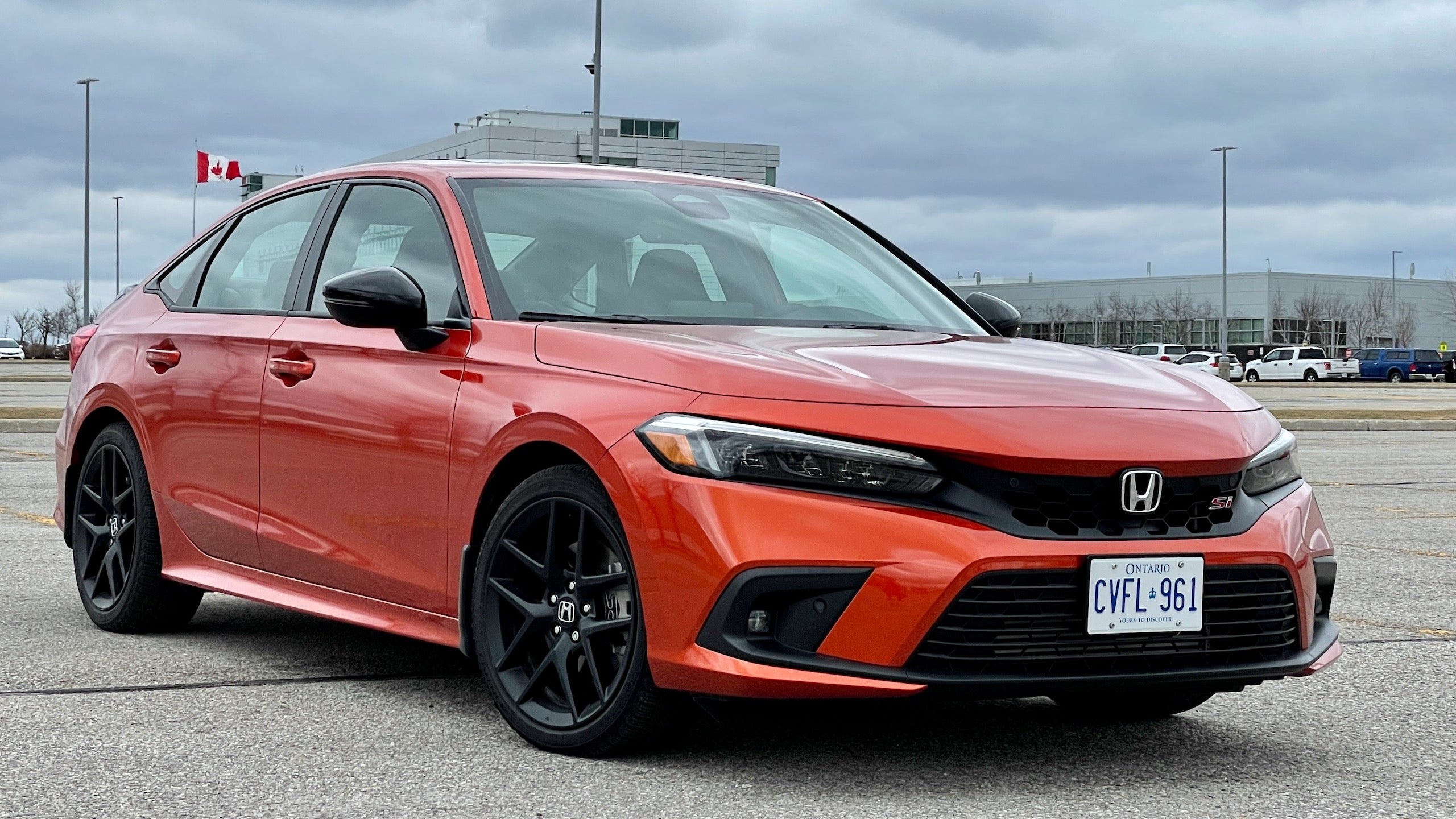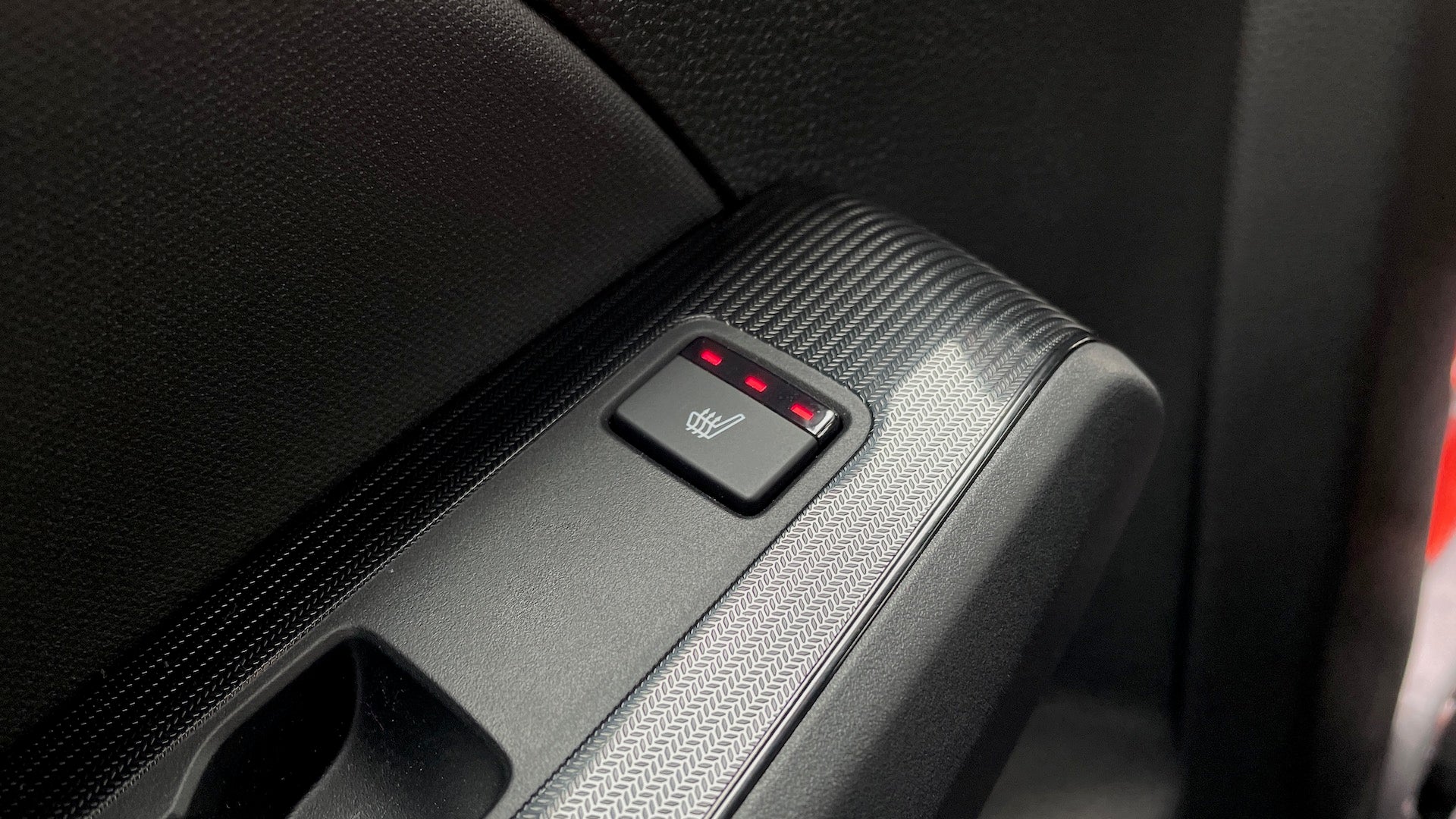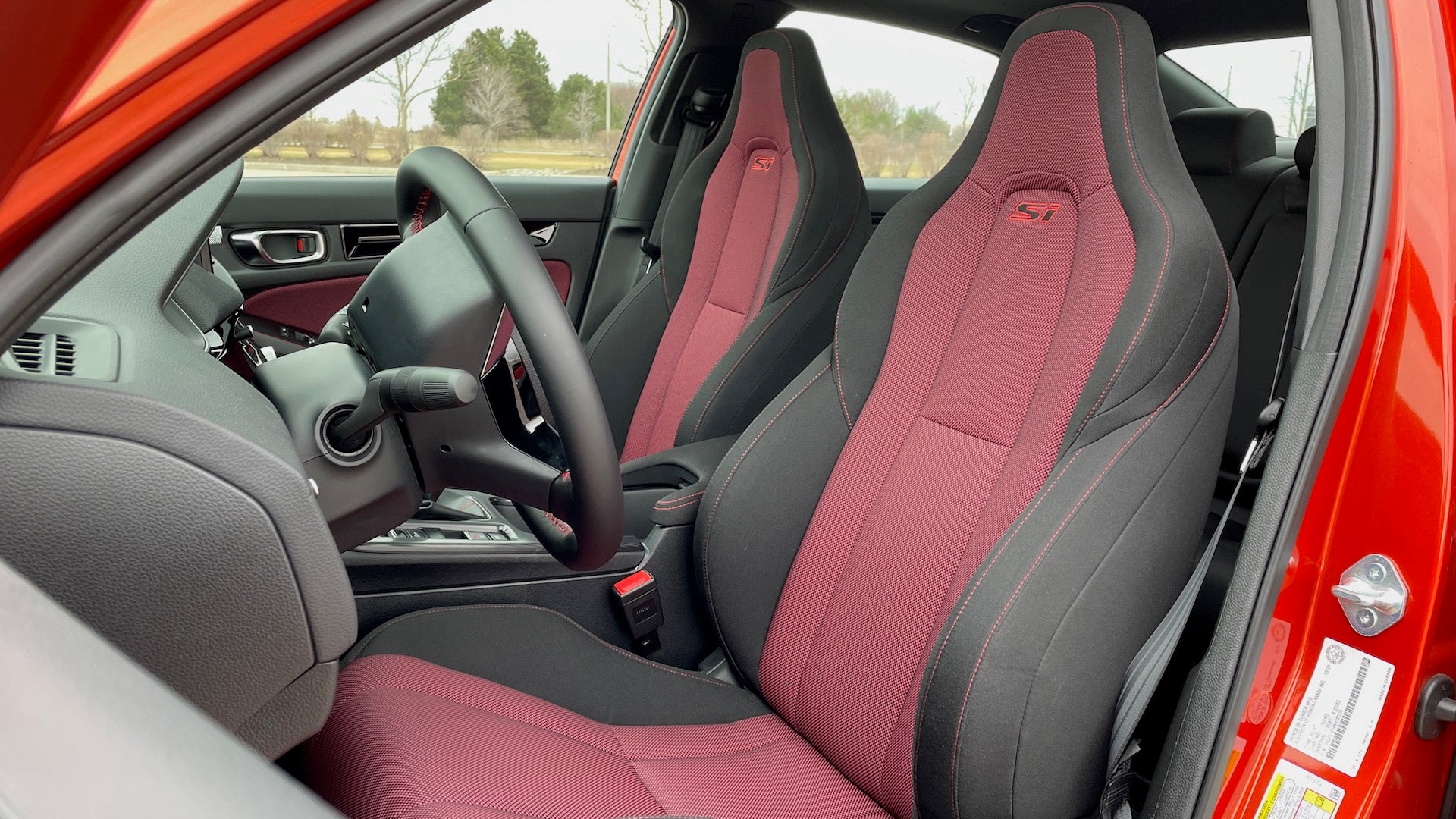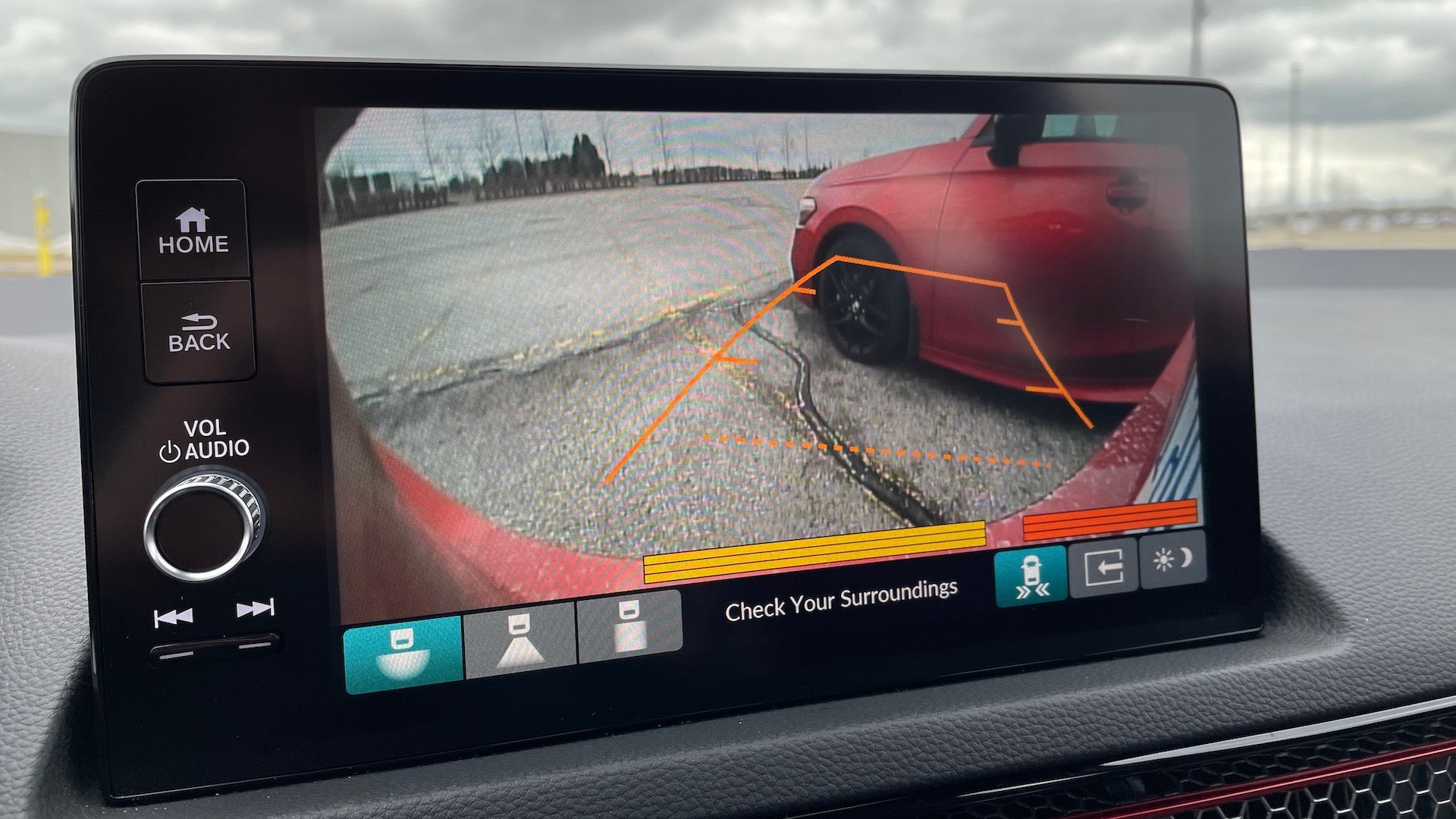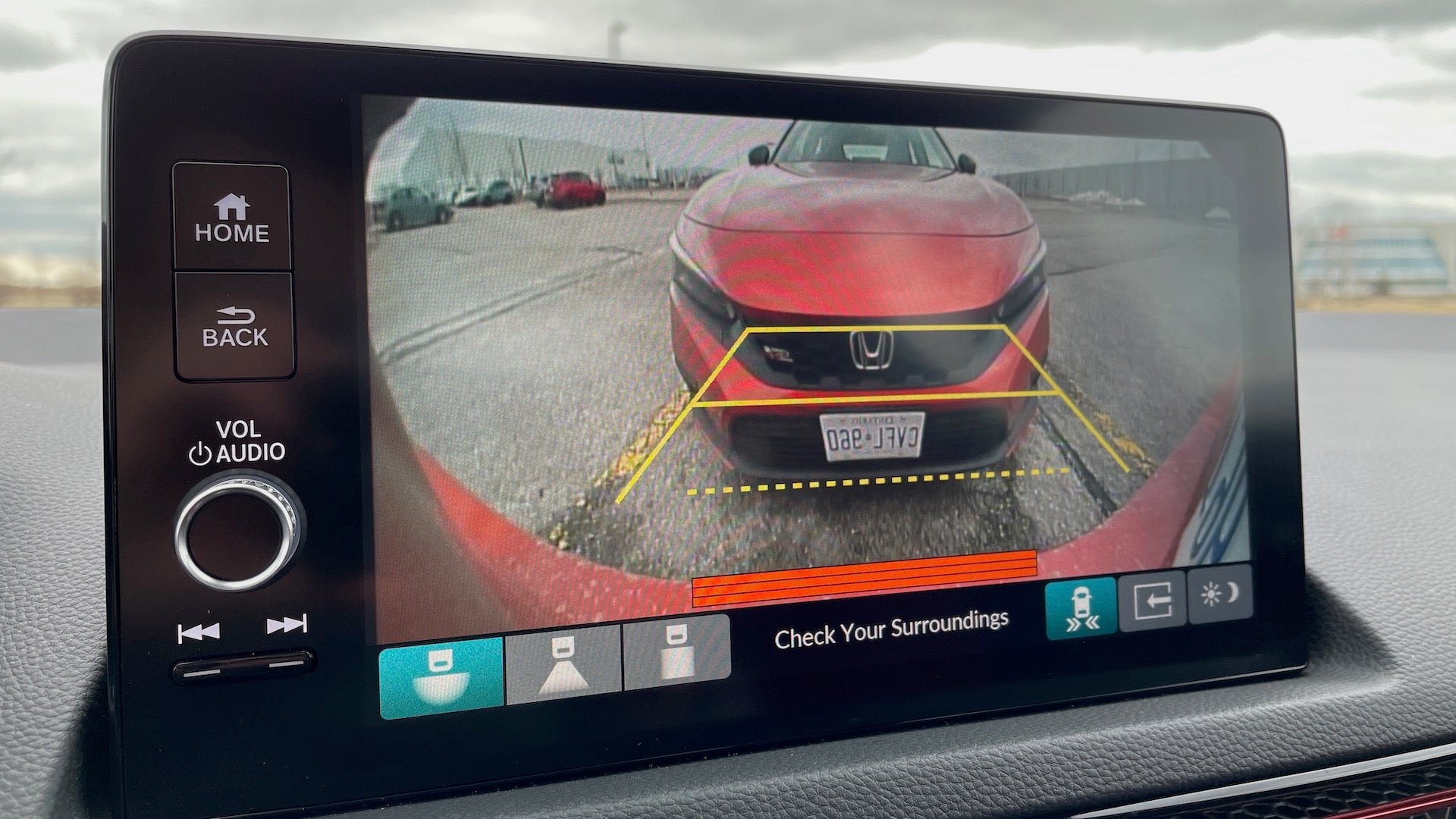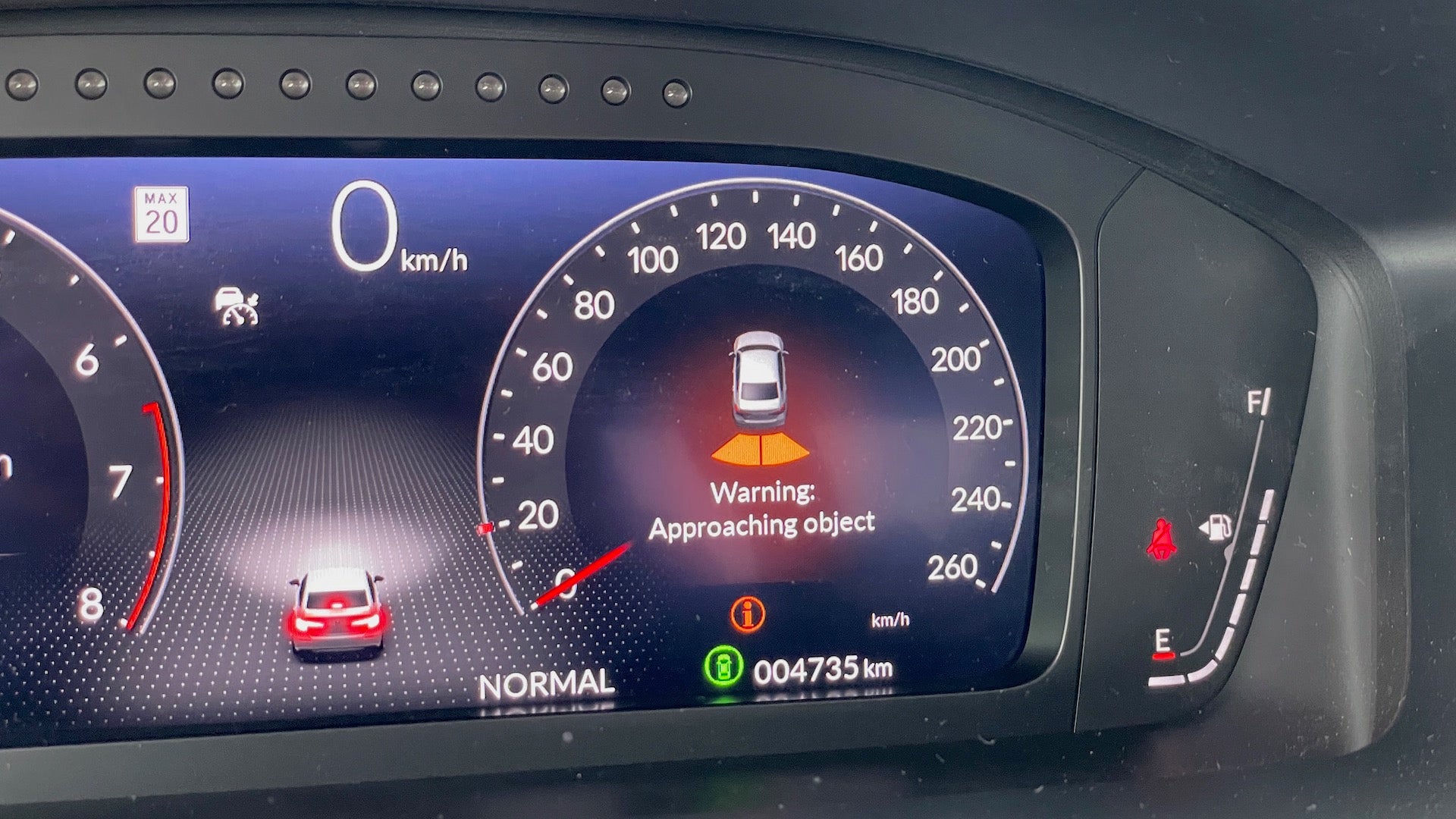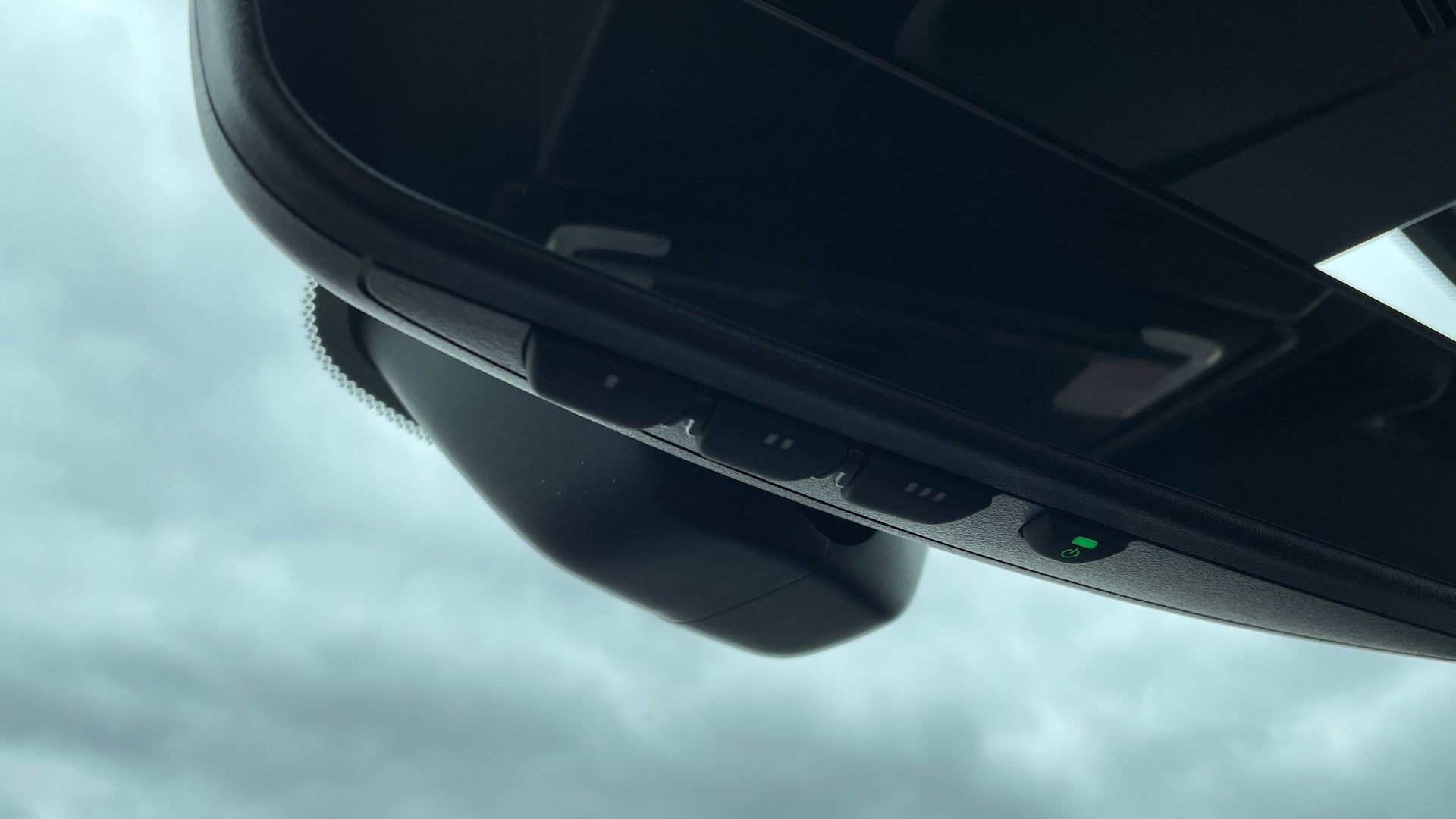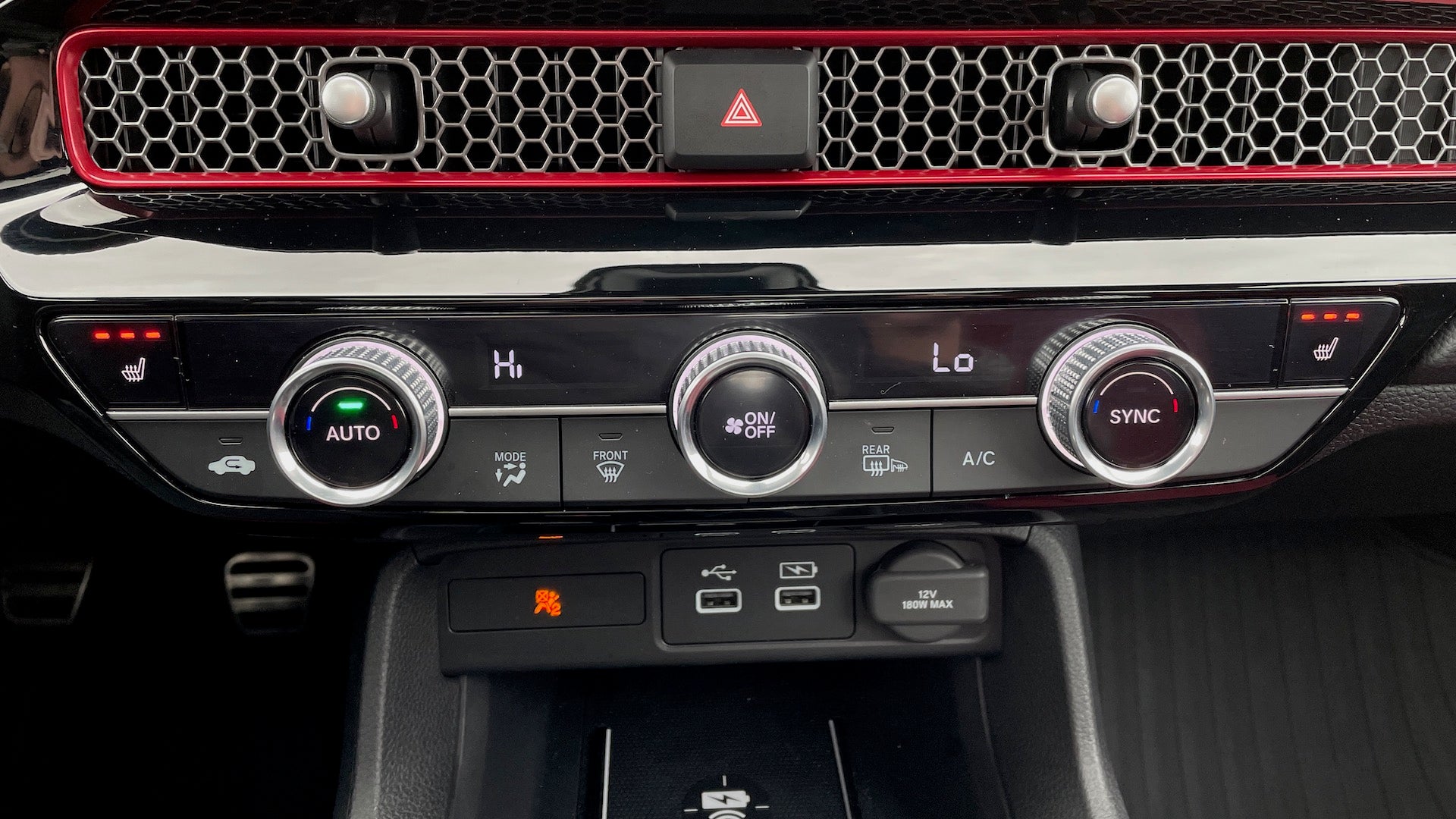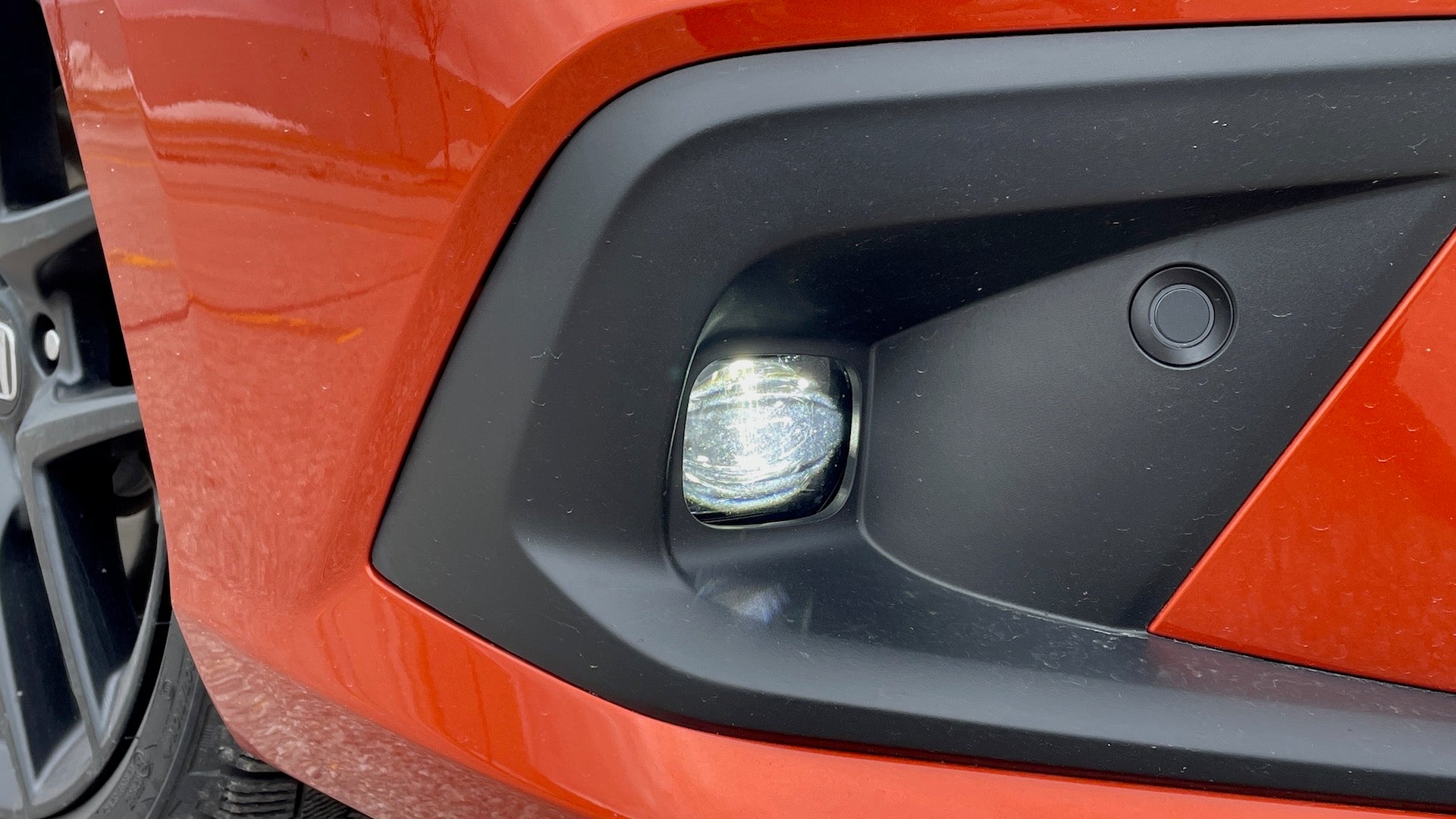Despite its proximity to the States, there are quite a few cars available up here in Canada that aren't sold in the so-called land of the free. Keen readers of The Drive may remember my jaunts in the Canada-only and surprisingly fun manual Nissan Sentra and the not-as-fun-as-I'd-hoped manual Kia Forte5. In this latest edition of Chris Drives a Manual Economy Car You Can Only Get in Canada, I got my hands on a Canadian-market 2022 Honda Civic Si.
I know what you're thinking. Yes, the new Civic Si is available in the U.S. too. But, you see, it isn't the same as this Si. According to Honda Canada, the Civic Si we get up here is based on the Civic sedan's top Touring trim, whereas the States one is built on the lower EX. Both versions of the Si get the same 200 horsepower, front-wheel drive, limited-slip differential, and six-speed manual but the Canadian one receives quite a few creature comforts, including a fully digital instrument cluster with shift lights, fog lights, parking sensors, heated seats, a heated steering wheel, dual-zone climate, an auto-dimming rearview mirror, and wireless charging. To add insult to injury, our better-equipped Civic Si actually costs less than the one sold in the U.S. when compared dollar-to-dollar. Although, that whole situation is a bit more nuanced than you might think.
Granted, this isn't new news, as Motor1 reported on the Canada-U.S. Civic Si discrepancies via YouTube's HondaPro Jason back in November. But since I actually live in Canada, I decided to get my hands on a maple syrup-spec Si in order to give readers an idea of how exactly these extra doodads fare. The Drive has already published two Civic Si reviews—and you are encouraged to go and read them—so, this isn't yet another traditional review of the Civic Si. Rather, here's a ranked, by-order-of-importance, item-by-item review of everything the Canadian Honda Civic Si gets but the U.S. version does not.
Let's get into it. [Ed. note: This piece uses Canadian spelling and units. It's intentional -- KL]
If you haven't heard, it gets cold up here in Canadaland so, if you ask me, a heated steering wheel is essential equipment on any car that costs more than about 30 grand. Naturally, then, the steering wheel in our Civic Si is heated. The button is big, clearly labeled, located on the bottom spoke of the wheel, does what is intended, and has an orange light indicating whether the heat is on or not. It's an unfussy implementation, easy to locate and press without looking.
Heated seats aren't quite as important to me as the heated steering wheel is (it's easier to drive in a jacket than to drive with winter gloves) but are highly appreciated all the same. When it comes to warmed-up chairs, Honda Canada didn't forget about the backseat passengers because both outboard rear seats (sorry, middle seat), as well as the driver and front passenger, get three stages of heating. In that highest setting, these get mighty hot fairly quickly. The front row gets heating for both their seat bottoms and the lower back area but, as far as my ass I can tell, the second-row seat heaters only warm up the bottoms.
Given this car's Civic Touring base, Honda's fully digital 10.2-inch instrument cluster makes an appearance behind the Canadian Si's steering wheel. In contrast, the U.S. Civic Si uses a seven-inch display integrated beside a physical speedometer. Considering that some Acura models are still out here rocking physical tach and speed dials, having this entire thing be a screen in a Civic is a nice, luxurious touch. Within both the tachometer on the left and the speedometer on the right, you can configure what info is displayed within the clocks.
On the left, you can either have audio info with full album art or a stopwatch. On the right, you can choose between seeing trip computers, a compass, your driver attention monitor, ADAS info, or a little graphic of the car that tells you if any passengers aren’t wearing their seatbelts. There are also selectable performance-oriented Si-only displays like a boost gauge and a G-meter. In this car's custom Individual drive mode, this display can be set up to either be red or blue.
The Civic Touring's instrument screen has this, too, but the most novel part of the Si's cluster might just be the little Civic that appears in the middle of the screen—complete with working lights and signals. Watching the tiny digital Civic's brake lights come on or blink its orange bulbs in sync with the real car was, like, weirdly and stupidly amusing.
Above the Canadian Si's 10.2-inch instrument display sits a row of shift lights. These aren't simply a graphic within the screen that mimics shift lights but actual, individual LEDs that illuminate as you climb the rev range and tell you when to shift. Granted, seasoned drivers should be able to know the optimal upshift time on sound alone but it's a nifty feature for beginner performance drivers and, even if you may not actually use it as intended, just looks kinda cool. Like from a Formula 1 car or something.
They're operational even in this car's normal drive mode, quite bright, and easy to see with just peripheral vision. Depending on your ideal driving position, though, these may be obscured by the steering wheel.
Enabled by the little dots seen on this car's front and rear bumpers, the Canadian Civic Si will emit increasingly frequent beeps as you approach obstacles while parking. Visual warnings that get redder the closer you get to said obstacles appear on the centre screen, at the bottom of the rearview camera view, as well as within the digital gauge cluster. Judging from a short parking test in which I purposely but slowly inched the Si towards another car, the parking sensors did indeed work as intended, sensing hazards while they were there and keeping quiet when they weren't.
This feature could help preserve the Si's bumper paint as well as that of cars around you. Nevertheless, the system can be turned off entirely via a button near the driver's left knee, convenient when taking the car through, say, an automatic car wash.
While the U.S. Si gets a regular rearview mirror you have to adjust with that little nub if you'd like to block out any tailgating high beam abusers, Canada's Si gets an auto-dimming unit that automatically darkens the mirror itself when glare is detected. Driving this car at night, a truck that inexplicably had its high beams on wasn't nearly as noticeable in the centre mirror as it was in the side mirrors, which notably do not automatically dim.
I did not get a chance to test this but the interior mirror also comes with HomeLink. That is, three buttons underneath that can be programmed to open your garage doors, eliminating the need to fumble around for a remote, keep it in a cupholder, or stick it semi-permanently somewhere in the interior, which could come off as unsightly.
This also works as advertised. Setting one side of the cabin on high and the other on low, half of the air vents spewed warm air while the others were mad cold. Lone drivers only need to press the button within the passenger-side knob once to synchronize the two zones' temperatures. Just like every other new-gen Honda Civic, the HVAC is controlled by a trio of knurled chrome and extremely clicky knobs that look and feel luxury car-level good. Dual-zone climate is definitely a nice-to-have feature. But outside of, like, having to share a car with another journalist on press events, I can't really remember the last time I took a dual-zone-climate-having car out of its one-zone "sync" mode because a passenger of mine has warmer/cooler blood than I do. Although, this is probably just a sign of my deep, chronic loneliness more than anything.
Nevertheless, the U.S.-spec Civic Si curiously only features single-zone climate control even though the Civic EX it's supposedly based on gets dual-zone climate.
Located underneath the HVAC controls and fore of the shifter, this car's wireless phone charger was big enough to fit a current, regular-size iPhone and kept it charged while it ran Apple CarPlay wirelessly. A pair of rails as well as the rubberized, grooved surface kept the device from sliding around too much during hard cornering.
For posterity, both the Canadian and U.S. versions of this car come with wireless Apple CarPlay and wireless Android Auto but only the Canadian car gets the wireless charging pad.
As the name suggests, fog lights are intended to provide extra lighting for better visibility inclement weather or, y'know, in the fog. On the Civic Si, these are activated by twisting a section on the turn signal stalk but only turn on when the full headlights are also on.
I will readily admit that in the dozen or so years that I've spent driving, I have never once consciously turned a set of fog lights on while driving through fog and, as a result, had less trouble seeing through said fog. Hence, there also wasn't much fog during this test drive to really put these through their paces but I can confirm that the fog lights do turn on as intended.
There are LED turn signals on the mirrors. Can confirm that they blink along with the regular turn signals in both directions and turn on during four-way hazard duty. Next.
With all of these extra bells and whistles, you'd assume that, converted to the same currency, the Canadian Civic Si has gotta be more expensive than its U.S. clone, right? Wrong. In Canuck Bucks, the Northern-spec Honda sports sedan—with all of the discussed features as standard, regardless of paint colour—costs $34,850 CAD after destination. At the exchange rate as of this writing, that's about $27,180 USD. Wanna guess how much the analog-speedo-having, fog light-less, parking sensor-less, unheated seat and steering wheel-having, single-zone climate U.S. Si costs?
It's $28,315 USD. Add another $395 USD to that if you'd like one that's orange, white, or grey.
When confronted with all of this, a spokesperson for the American Honda Motor Company told me, "Here in the States, our research confirmed that enthusiasts wanted an Si that’s a fun daily driver at an affordable price. As with any product, difficult decisions and trade-offs need to be made when determining equipment levels. Each market very carefully considers consumer priorities to provide a competitively priced vehicle with popular features and content."
Honda then recommended that I compare the U.S. Si's price against its U.S. competitors rather than play currency exchange games, and when I took a bit of a deeper dive into where the U.S. Si's pricing falls in relation to its competition (as well as other Civics), things indeed started to make a little more sense.
Here's what HondaPro Jason and that initial report by Motor1 didn't tell you: If you do the math, all of the cars in this general segment are all technically cheaper in Canada if you convert their U.S. prices directly to Canuck Bucks. The Civic Touring, for example, stickers for $29,965 USD in the U.S. and $33,750 CAD in Canada. Converting that U.S. price to CAD, that's more than $38,000 Canadian. And it's a similar situation when you run the numbers on the Toyota GR86, Subaru WRX, and Volkswagen's Golf GTI. Thus, focusing on just the U.S. market, the U.S. Si's price is actually pretty fair, with fewer features and all.
Essentially, Honda has positioned the Si below the Touring in the U.S. whereas, in Canada, it's the other way around. The U.S. car's strategy lets the model undercut both the WRX and GTI (arguably its two closest competitors), something the Canadian Si does not do in its own market. As another illustration, the Civic Si in Canada is only about two grand less than the $36,725 CAD base 2023 Acura Integra whereas the price gulf between the two models in the States is closer to four grand.
With all of that said, I know what you're thinking. In the age of scarce supply and rampant dealer markups, MSRP figures are pretty much academic, right? In the U.S., sure, but up here in Canada there are actually laws that prevent dealers from charging extra for new cars (used cars are fair game, though). Granted, some less scrupulous Canuck dealerships have illegally and sneakily tacked on relatively small hidden fees to their merchandise but it's unlikely you'll see a new Canadian Civic Si brazenly listed and being sold for, say, 55 percent above its sticker price.
Regardless of how much it costs, though, the 2022 Honda Civic Si is a great everyday driver's car and the extras that come with this Canadian model do indeed make it that much more livable every day. If you ask my coddled self, heated seats and steering wheels are essential equipment up here in The Cold Country, which is why I ranked them the highest. The parking sensors and that auto-dimming mirror worked valiantly in making life in the Si less stressful in parking lots and less unpleasant at night, respectively, which is also why they ranked high.
Those parking sensors and that wireless charger, by the way, aren't even available on the new base Integra.
The Canadian Si may not have an Acura badge or that new Integra's liftback styling but if all you were looking for is an Si with more luxury features, what you were looking for already exists. All you have to do to get it is move to another country.
